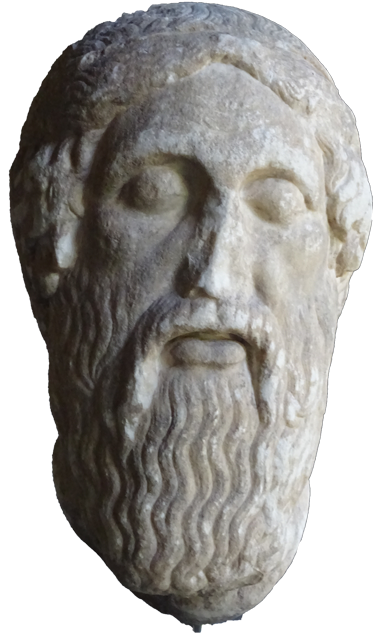Odysseus’ palace
When I climbed up Mt Lachties, the Homeric Mt Neriton of Odysseus Unbound, to survey ancient Ithaca, there was Kasteli, the site of Odysseus’ palace, in the distance overlooking Argostoli Bay. I decided to walk there across the hill in the middle distance beyond the ancient field.

From the top of this hill I looked around. To the east was a hill which seemed from the distance to have ruins on it, so I decided to go there on the way to Kasteli.

Once amongst these ruins I was convinced I had discovered the site of Odysseus’ palace! Such conviction surely afflicts many a wishful searcher for the home of Odysseus. Yet here there were extensive grounds for a complex of palace buildings, actual ruins with evidence of worked stones, views of the sea to the north and the south and over “Strabo’s Channel” to the east. From a strategic and defensive perspective, it was perfectly sited. There was a playing field for the suitors, and signs of a settlement, the town or city of Ithaca. Anyhow, I reserved judgement for I hadn’t even been to Kasteli. Nor did I have a map or know that the place I was in was called Palasti.

The extensive grounds of Palasti.

Some of the ruins of Palasti.
Arriving at Kasteli was a disappointment. A splendid view, but no site for a palace complex, too precariously placed strategically, no evidence of ruins (though the undergrowth may have disguised them), no evidence of a town or city adjoining the palace, and no water.

Argostoli Bay from a position just below the summit of Kasteli. The Argostoli Peninsula - the island of “Asteris” where the suitors waited to ambush Telemachus - is in the distance on the right.

Mt Lachties from the summit of Kasteli. Palasti is on the hill seen between Mt Lachties and the Kasteli summit marker.
I decided to go back to Palasti the next day to check on two things: in Book 16 of the Odyssey, the suitor Antinous is sitting outside the walls of the courtyard of Odysseus’ palace when he sees the suitors’ ambush ship returning from Asteris. The suitors get up and go down to the seashore to greet it (16.351-2). Was there a view from Palasti such that the suitors could have seen their ambush ship return? And was there a source of water?

Argostoli Bay from Palasti

Argostoli Bay from Kasteli
There is a view! The suitors could have seen their ship sailing or rowing towards them. Once out of view, it could have taken the ship the same time to come into the harbour as it would have taken the suitors to go down to meet them: 45 minutes.
There is no denying that the view of the harbour is better from Kasteli if one descends a little from the summit. But the suitors’ ship would have been spotted returning well before it was at the foot of Kasteli.

Argostoli Bay as seen from below the summit of Kasteli
And on Palasti there was water! There was not only a well in the grounds of the ruins, but also evidence of former springs on the west side of the playing field, and of a diversion and damming of the creek 100 metres down the path leading up to Palasti.

The well on Palasti. In the distance is Argostoli Bay.

looking into the “dark water”
There was another reason Palasti seemed a better candidate for the site of Odysseus’ palace. There is evidence of a town adjacent to it, and a road. The Odyssey requires both. After the resourceful Odysseus has killed the suitors, he resolves to escape to his father’s farm because he knows he will be pursued by the families of those he has killed. To avert or at least delay rumours of the slaughter, he instructs the lyre to be struck up and the handmaids take up dancing and song so that any neighbour or anyone passing by will be tricked into believing there is a wedding feast going on (23.130-140). In the satellite photo of Palasti below, one can imagine, almost see, the palace, the neighbouring town, and the old road passing by.

But where is the town and the road close by the peaked Kasteli from which neighbours and passersby could hear song and dance? And where is the water? The road is modern.

The etymology of the names Palasti and Kasteli suggests the names date from the Venetian period. The ruins at Palasti are not, in their present form, Mycenaean. However, their respective locations tell an ageless truth: the site at Palasti would have afforded better protection from marauders and pirates than the harbour hilltop of Kasteli.
Odysseus Unbound did not consider Palasti as a possible site for Odysseus’ palace. I believe Palasti would be a more likely site than Kasteli.
But I suspect, despite my initial enthusiasm at arriving at Palasti, that neither is the true place.
